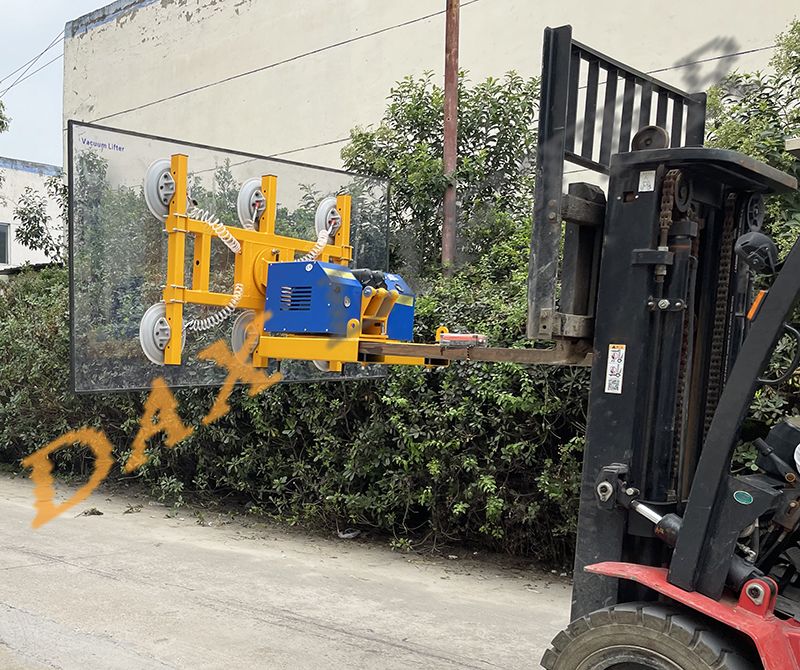Forklift suction cup uses vacuum to absorb and transport goods, so it has certain requirements on the surface of the goods. The following are the basic requirements for the cargo surface of forklift suction cups:
1. Flatness: The surface of the goods should be as flat as possible, without obvious unevenness or deformation. This ensures closer contact between the suction cup and the surface of the cargo, resulting in a better vacuum adsorption effect.
2. Cleanliness: The surface of the goods should be clean and free of dust, oil or other impurities. These impurities may affect the adsorption force between the suction cup and the cargo surface, resulting in unstable adsorption or failure.
3. Dryness: The surface of the cargo should be dry and free of moisture or moisture. A wet surface may affect the adsorption effect between the suction cup device and the cargo, or even cause the suction cup device to fail to work properly.
4. Hardness: The surface of the goods should have certain hardness and be able to withstand the adsorption force generated by the suction cup. A surface that is too soft may result in unstable suction or damage to the cargo.
5. Temperature resistance: The surface of the goods should have a certain temperature resistance and be able to withstand the temperature changes produced by the suction cup during its operation. If the surface of the cargo is not resistant to high or low temperatures, it may result in reduced adsorption or damage to the cargo.
It should be noted that different types of forklift suction cups may have different requirements for the cargo surface. Therefore, in practical applications, it is necessary to select the appropriate suction cup type according to the specific situation and ensure that the cargo surface meets the requirements of the suction cup.
sales@daxmachinery.com
Post time: Mar-25-2024

